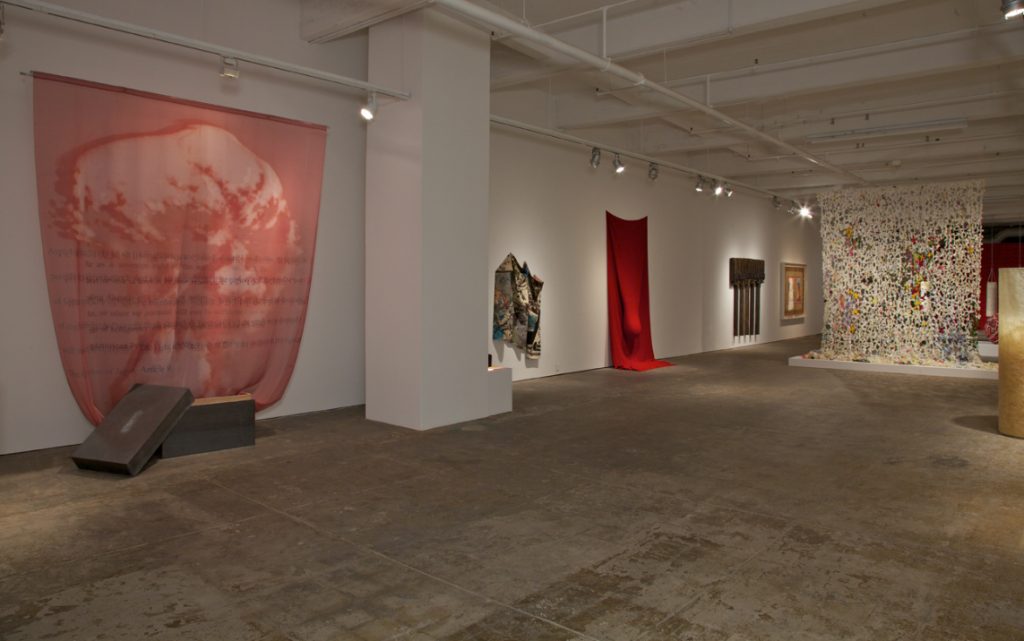While in residence at FWM, Kelley created two large-scale knitted afghan installations, projects in keeping with his interest in craft materials during the 1980s and early 1990s. Entitled Lumpenprole and Riddle of the Sphinx, they employ a similar technique in their fabrication. FWM identified a studio at the Philadelphia College of Textiles and Science (now Philadelphia University) where artists are trained to operate computerized knitting machines, and Kelley’s pattern for the room-size afghans was translated into panels of appropriate size for the machines to accommodate. The panels were then hand sewn together to form the finished pieces. For Riddle of the Sphinx, Kelley chose the gradation of hues based on color names that suggested the evolution of a day—“purple dawn” and “midnight” are two examples.
Like many of Kelley’s previous works that incorporate worn toys and domestic objects, these two installations introduce the aesthetics of the artist’s lower-middle class background through their association to handmade, knitted afghans. Kelley has said that this choice was intentional, though he doesn’t want them to be interpreted as “exotic,” but rather he wants “to present these ‘poor’ materials as text themselves” (Mike Kelley, Kunsthalle Basel, Basel, 1992).
Hidden beneath each afghan are objects, the outlines of which can be seen protruding through the knitted yarn—in Lumpenprole, stuffed animals are the covered forms, while in Riddle of the Sphinx, metal bowls are concealed. The bowls in Riddle of the Sphinx refer to the stages of man, as posed in a riddle to Oedipus: What walks on four legs in the morning, two at noon, and three in the evening?

